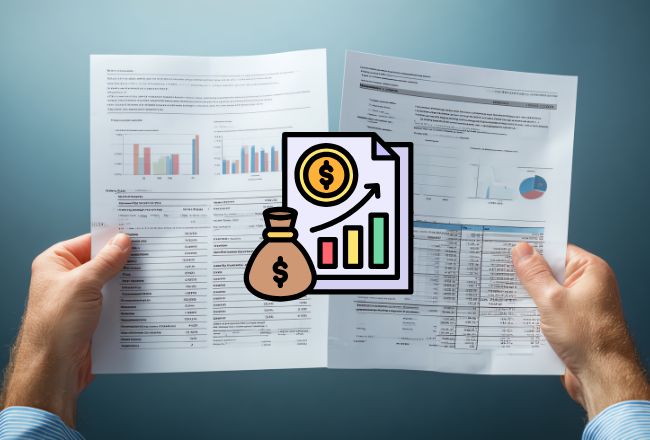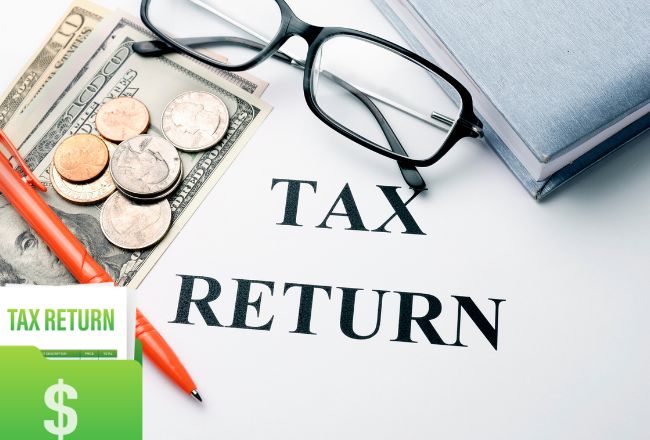
If you have ever had a "regular" job, you get the drill. W-2s magically appear, direct deposit comes on Fridays, and when you are asked to provide proof of income, you pull out your pay stubs. If you jump on over into the world of online creators, though, things get a little muddled.
Creators juggling different income streams, YouTube payouts, random brand partnerships, and affiliate links that may have been paid to you without any specific schedule. It can be a pain to make your earnings look legit and professional. But it is doable. Gather a few official documents, whip up some reports, and you can pull together an income packet that shows legit proof of income professionally.
Stick with us for a run-down on the paperwork you will require and getting your online game tidy in front of the suits.

Using Platform Payout Reports
Platform payout reports are lifesavers for freelancers who need to show proof of income, especially when the tax man comes knocking or your landlord wants to see your pay stubs. These are the downloadable statements from YouTube, Patreon, Etsy—basically, wherever you hustle online.
YouTube issues AdSense reports every month, so you can see what your videos actually earned. Patreon provides creator income statements that break down what your supporters contribute to your account. The trick is to grab the full report, not just a screenshot, and double-check the dates so you don't mix up your good months with your not-so-good ones.
If you really want to look professional, place those payout reports next to your bank statements. It makes things look way more legit, trust me. Just make sure the numbers line up; the last thing you need is someone calling you out on a mismatch.
Using 1099 Forms
Your 1099 forms are another golden ticket in proving income. If you rake in more than $600 from some company or client, the IRS says they must issue you a 1099-NEC or sometimes a 1099-K. It is their way of saying, “We paid this person, and here is the receipt.” Super handy when tax season rolls around or when some landlord wants to see you can actually pay rent.
You will see big names like PayPal and Etsy spitting out those 1099-Ks if you are pulling in enough cash through them. However, do not just take their word for it; double-check those numbers against your own records. Sometimes things get weird, and you don't want to be stuck explaining mysterious income to the IRS.
Smaller clients sometimes forget, or they are new and unfamiliar with the rules. Do not sit around waiting; ask for the form if you do not get one. If you bundle these 1099s with your bank statements or invoices, you have pretty solid proof.
Creating Pay Stubs
Pay stubs can also be prepared by freelancers for the purpose of presenting their incomes in a professional format, even though they have no steady employer. It's a legal option, only if the particulars are accurate and in compliance with your actual income. A digital pay stub tool is used in preparing stubs in compliance with income from various sources.
Begin by arranging your platform payout reports, bank statements, and invoices to establish a plausible income amount. The template will direct you to enter information such as pay period, gross income, and paybacks. Upon filling in the details, the pay stub resembles those released in regular employment.
Always retain backup paperwork, such as contracts or receipts for payments, to confirm the figures in case you are obliged. You thereby produce a professional document without compromising on transparency and compliance.
Using Bank Statements
Bank statements are another freelancer’s secret weapon for showing you are actually making money online. They lay it all out: payouts from platforms, client gigs, and random affiliate checks. You name it, it lands there. Landlords and lenders usually just want to see that cash keeps rolling in, and honestly, these statements do the trick most of the time.
Flag the deposits that actually matter, for example, by circling them. Also, try not to let your business earnings get tangled up with personal spending, as it makes your life (and theirs) way easier.
If you want to look extra legit, toss in some invoices or platform reports with your bank statements. It helps solidify your claims.
Using Client Invoices
Bank statements are quite something, but invoices connect the dots to make your statements way more legit.
They usually spell out everything: client’s name, what you did, and the payment amount. Landlords and lenders love that stuff, probably because it looks way more professional than a bunch of random Venmo screenshots.
Free tools like Wave or QuickBooks can help create clean, itemized invoices for ongoing or one-time work. With these tools, it is easy to keep copies organized and consistent, ensuring you have a ready record to verify your income when needed. Bottom line: organized invoices = fewer headaches.
Providing Tax Returns
Tax returns serve as another dependable way for freelance creators to verify income. They complement client invoices by summarizing annual earnings, offering a comprehensive view of your financial situation. Tax returns include information that matches official records, making them widely accepted for loans, sponsorships, or rental applications.
Ensure you file accurately, reporting all income sources, whether through platforms or private clients. Including supporting documents, like 1099 forms, strengthens your case further. Keep multiple years of returns on hand, when possible, as they show consistency in earnings over time.

Profit and Loss Statements
Tax returns are nice and proper, all right, but they are only the tip of the iceberg. To fully see where your money is going, P&L statements are the way to go. They break it out in detail, money coming in, money going out for things like software, equipment, and random subscriptions.
If you are juggling gigs or hustling through a multitude of projects, particularly in the world of creators, these statements are absolute gold. QuickBooks, Excel, and even certain simple Google Sheet templates are absolute lifesavers. Do not let them collect dust; refresh the data monthly or quarterly so you are not panicking later.
Pair your statements with your tax returns or some invoices, and you have got yourself a killer proof-of-income package.
Contracts as Proof of Income
Finally, signed contracts are also considered income verification. They are literally your working life's receipts showing who is paying you, what you are doing for them, and how much you are receiving ( and when you get it). Incredibly convenient in the case you are on long-term employment or you are patiently waiting for checks to be deposited in your account.
If you wish to make it very clear, simply box in the key points, including what you are getting paid for, when you are getting paid, and for how long you are working. That way, no one is in the dark.
Do not just throw the contract into a virtual black hole. Sync it up with payment receipts, invoices, or deposit screenshots from the bank. If you are still exchanging PDFs via email in 2025, mix it up with DocuSign or Adobe Acrobat. They will keep your contracts tidy and safe, and it just looks a lot more professional.
Final Words
If you have got your records in disarray, good luck trying to make people believe you are seriously in business. But hey, if you have got your act together, such as real neat records and invoices, you are much farther ahead. Lenders, sponsors, and even your landlord shall take you more seriously.
It is a pain to keep everything organized, but it pays off. You look professional, you can jump on opportunities faster, and you do not end up sweating every time someone asks for proof of income. Little things like this make a big difference down the road.
- Win “Near Me” Searches With Your Affiliate Site - October 9, 2025
- 5 Best Formation Companies Reviewed 2025 - October 8, 2025
- Why Online Hustlers Still Struggle With Time - October 7, 2025
